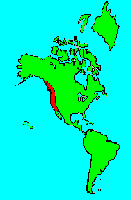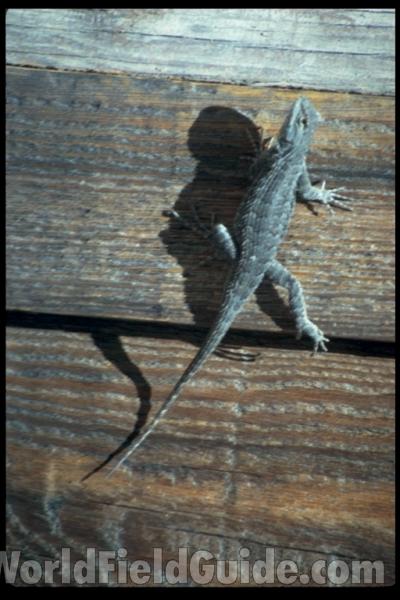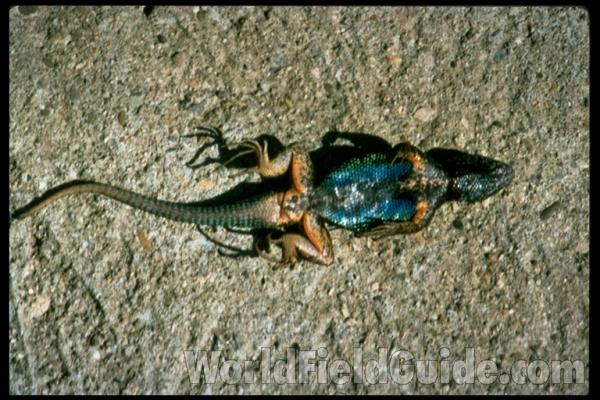SPECIES INFO
Western fence lizard (Sceloporus occidentalis) is found from central Washington south through most of Oregon and California and Baja California. It is also found in southwestern Idaho, almost all of Nevada, part of western Utah, and the extreme northwest corner of Arizona. This is a small lizard with a body length usually around three inches excludling the tail. It is common and frequently observed. There are four subspecies.Sceloporus genus is found in the Pacific Coast states of North America including Washington, Oregon, and California. From these three states this genus occurs south through Mexico and Central America to Panama. This is a large genus with about 80 species, some of which can reach lengths of 14 inches.
Iguana family is primarily found in the New World with several species being found in the United States. Madagascar, Fiji, and the Friendly Islands also have representatives. The American Chameleon, not related to the Old World Chameleon, is a small, but typical, example of this family.
Lizards and Snakes (Squamata Order) share many common characteristics and consequently they are grouped in a single order. There are greater differences between some groups of lizards than there are between other groups of lizards and snakes. The same is true of snakes. Lizards and snakes share a common skull shape.
There are perhaps 4,000 species of lizards and perhaps 2,700 species of snakes alive today. In the Great Big Book of Snakes and Reptiles published in 2014, they noted the above estimates.
Reptiles (Class Reptilia) are an ancient group of scaled chordates. These scales may be permanently joined, as in the turtles, or flexible, as in the snakes. Reptiles are land-based. Their eggs are laid on land and the young are air breathing.
In the Great Big Book of Snakes and Reptiles published in 2014, they noted that there are more than 7,000 species of reptiles alive today.
Backboned Animals (Phylum Chordata) are the most advanced group of animals on earth. These animals are characterized by having a spinal cord or backbone. Most members have a clearly defined brain that controls the organism through a spinal cord. Fish, amphibians, reptiles, birds, and mammals are in this phylum.
Currently, some taxonomists believe that the fish should be divided into two groups (sharks and regular fishes) and that there are some other primitive groups in the phylum such as hagfish or lampreys.
Animal Kingdom contains numerous organisms that feed on other animals or plants. Included in the animal kingdom are the lower marine invertebrates such as sponges and corals, the jointed legged animals such as insects and spiders, and the backboned animals such as fish, amphibians, reptiles, birds, and mammals.




